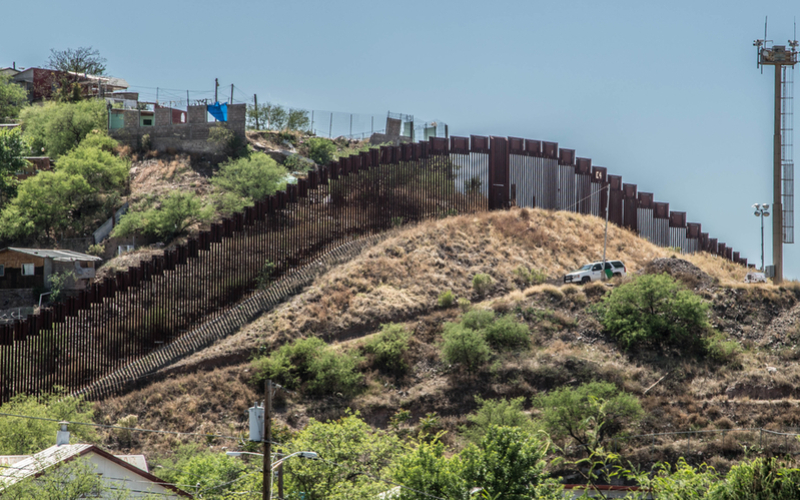GoFundMe for a Government Program?
Now, here is a real innovation in public finance.
Supporters of the president’s idea of building a wall against illegal migration from the Southern border have opened an account at the website GoFundMe. Motivated by Congress’s failure to act, these enthusiasts have decided to take matters into their own hands and invited the largest-possible contingent of compatriots to join them.
Call it vigilante spending. They are asking for donations to support a program they believe in.
It’s been an implausible success. Already in 4 days, the campaign has raised $11,849,316 from 194,519 people who are willing to put their money where their votes are. To be sure, it is only 1 percent of the goal of $1 billion. Still this is more than one might have predicted. (It has raised far more than the opposite effort: a GoFundMe for ladders to climb over the wall.)
If the goal is reached, the credit cards are charged and the deed is done.
Now What?
There are some practical problems of course. Who gets the money and how does it become a government program, and can it really happen that a private effort of fundraising effort can force itself into what would otherwise be a priority controlled by legislation? This is new territory.
There’s an implementation problem too. Most of the land along the Southern border, particularly in Texas, is privately owned. A contingent of GoFundMe benefactors possesses no legal authority to rob people of their land holdings. Only government can do that.
Last year, the Senate Judiciary Committee wrote the Department of Homeland Security about this issue. The Q&A exchange produced the following.
Question: According to the Government Accountability Office, only about one-third of the land on which the President’s proposed border wall would sit is owned by the federal government or Native American tribes. Does DHS plan to use eminent domain to procure the land it needs to build the border wall?
Response: It is always DHS’ preference to acquire private property through voluntary sale. However, there are situations where that may not be possible. For instance, past practice has shown that in some locations, it is impossible to determine the rightful owner/owners of the property based upon the available property records. In such cases, the Government must file a condemnation action to acquire the property and the Court proceedings will determine who owns the property, and thus, who has the right to just compensation for that property. In addition, there may be times when the Government and the landowner cannot agree on a price, or a landowner is unwilling to sell for any amount of money. In such situations, condemnation is the only method for acquiring the needed property.
Question: How much is the government prepared to spend fighting landowners in court?
Response: At this early stage, DHS cannot reasonably forecast total or final land acquisition costs associated with the border wall. However, for border barrier projects outlined in the FY17 enacted budget and the FY18 President’s budget, CBP included a rough order of magnitude for real estate costs based on lessons learned from the border fence project. CBP cannot estimate or identify any specific or definitive real estate costs or requirements until CBP begins conducting the necessary planning and research.
Question: Is there guidance in place to determine the appropriate amount of just compensation” to which landowners subject to eminent domain are constitutionally entitled?
Response: Legally, just compensation is defined as the fair market value of the property on the date the Government filed the complaint in federal district court – in other words, the date of the taking. … The concept of compensation to a landowner may include not only compensation for the property that is acquired, but also compensation to a landowner for damages to the remainder of the landowner’s property. “Severance damages” refers to damages awarded to a property owner for the reduction in fair market value of the land as a result of severing the condemned land from a larger parcel of land.
Hence, even for government empowered to confiscate, this is a real challenge. There is no real way to determine how much a wall like this would cost, given the constitutional requirement that government must pay people for the land it steals from them.
In addition, it is not permissible for a private company to confiscate private land from its owners without some kind of legal cover as provided by government. This leads to the conclusion that even if the GoFundMe campaign raised $1 billion, it would still lack the necessary power required to engage in the largest-scale confiscation of private real estate ever contemplated in the history of American politics.
As innovative as the GoFundMe idea is, clearly, there still seem to be some holes in the execution of the idea.
That said, the campaign does raise some interesting points. A major reason why government programs tend to be so socially divisive is that not everyone agrees with what government is doing with the people’s money. Some people like programs that take from the rich to give to the poor but other people find that to be unjust. Some people oppose supporting governments that wage war on neighboring populations but others want that practice to continue. Some people want government to support the arts and others do not.
One possible solution would be to give people some choice over the programs they support. You only pay for what you believe in. In practice, this would introduce to the funding of government an element of democratic voluntarism. Public policy would be managed in the same way everything in the marketplace is managed: based on how people choose to allocate their resources.
In the marketplace, this is how it comes to be that some companies profit and expand and other companies bear losses and eventually shut down. Putting government programs to the test of the marketplace could yield some very interesting results.
A Model for the Future
In the days since this GoFundMe campaign has gone live, pundits have had a field day imagining other ways in which this model could affect the conduct of government priorities. Maybe everyone who pays taxes should be empowered to allocate their expenditure according to their own values. Maybe taxes themselves could be replaced with a purely voluntary model in which people send their money to government only and insofar as government is doing things they like.
At some point, you have to begin to ask the truly practical question: is there any function that government presently performs that is certain to improve on what could otherwise take place on a private and voluntary basis? The considerations here concern both effectiveness and ethics. Private education, private welfare, private health care, private security, and so on, have proven far more effective than government bureaucracy. From an ethical point of view, it is surely far preferred to gain people’s approval for taking their money rather than taking it at the point of a gun in the way that government raises money today.
The GoFundMe campaign for the wall illustrates both the possibilities and the limitations of relying on voluntary revenue collection. Private efforts might be able to collect the money they need, but they will not and should not obtain the powers that government posseses to take away the people’s liberty and property. Why we allow government to have that power at all is another matter entirely.












